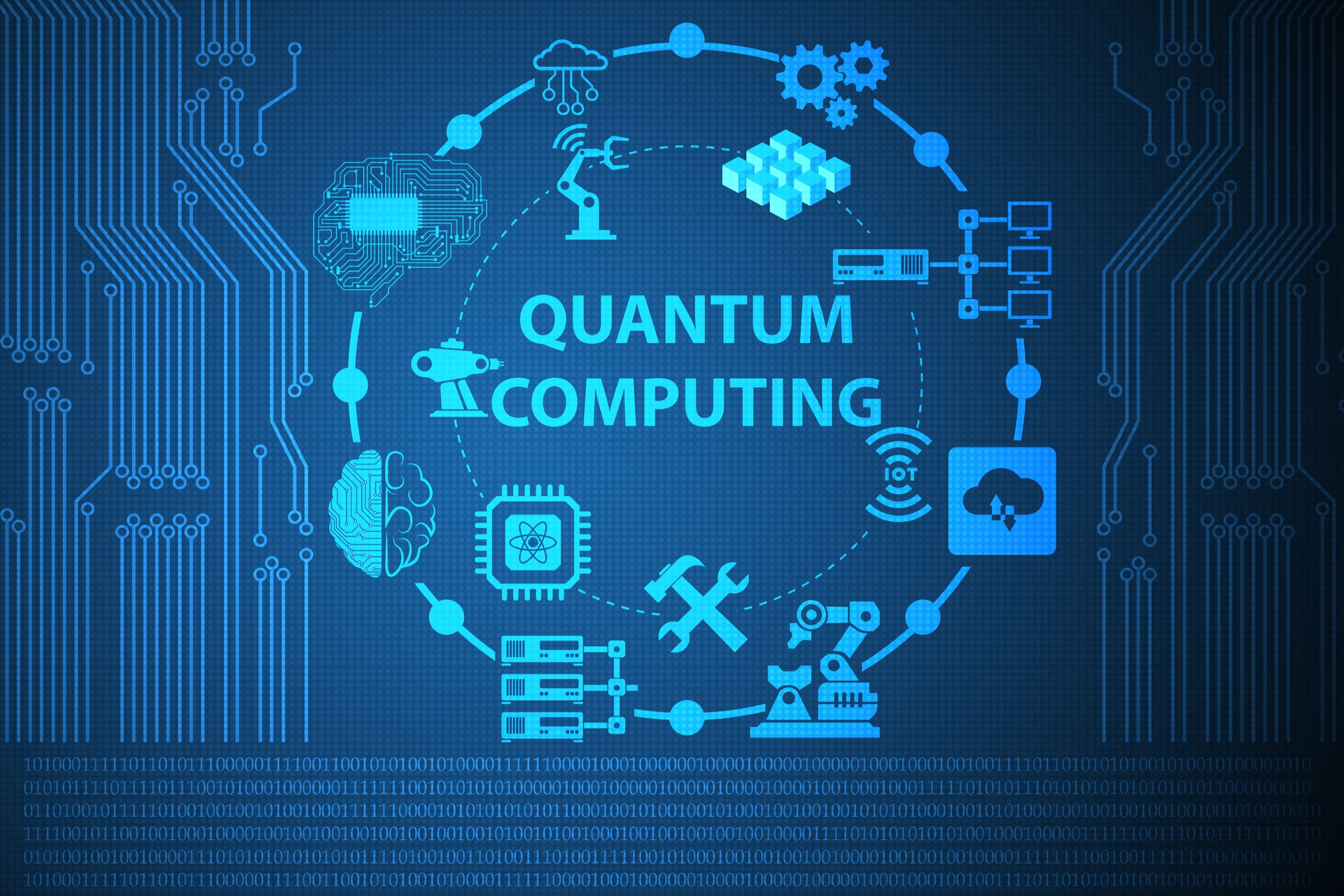
The Quantum Future – Part 1
The Quantum Future
Computing is all about to change with the unveiling of quantum computers. This is going to be a big leap in computing that will bring with it fundamental shifts in different technologies used today. Currently, there are many security technologies built on the complexity of computing different puzzles of which normal computers can take thousands, millions, or billions of years to crack.
These are mostly security solutions that use cryptography. However, the unveiling of quantum computers will mean that these complex puzzles will be solvable in less time. Therefore, many encryption algorithms that are currently deemed secure will not be after the release of quantum computers in the world.
Quantum computers will take over the future. It is not just an advanced way of computers; it is a reformation of computers atom by atom. These changes will have impacts that will be felt in all sectors.
This article will look into this based on the following topics:
- Evolution of the quantum technology
- The quantum technology race
- Quantum technology breakthroughs
- Impacts of the quantum technology
The first general purpose computer was built in 1837 and it was man’s biggest attempt at computing. After a century, another big milestone was reached when ENIAC was built. It was the first electronic computer. It used vacuum tubes to control the flow of electricity. After that, transistors were introduced allowing smaller computers to be built. Today, microprocessor technology is in dominance, and it has allowed for the creation of very powerful but small computer processors. Therefore, computers have been reduced from the size of entire rooms to the size of a device that is handheld. This is the current stage of computing that seems to be a big improvement from the ancient computers.

However, there has not really been a fundamental change in the way computers are built. Most attempts were made to reduce the size of computers. The same idea of building a computer using a top-down approach is still in play. However, research is ongoing to build computers from the bottom up, at atom and electron level
Evolution of the quantum technology
The following is the path that the quantum technology research has taken: (history of quantum computing)
1965
A physicist called Richard Feynman was involved in the development of the atomic bomb. In his research, he came up with several theories on quantum electronics that explained how electrons interacted with each other. He created visual depictions between electrons and photons, as well as depictions of several other atomic interactions.
1980
Feynman investigated the conventional concepts about quantum physics and how binary states could be presented in two-state quantum systems. The idea was to simulate quantum computers, but instead of using the conventional computers, he wanted these simulations to be done in quantum systems.
1985
A theoretical paper was published by David Deutsch in Oxford explaining the two-state quantum system and a universal quantum computer. It describes how the attainment of the two-state quantum system could lead to the ability to perform simple operations.
1994
Peter Shor proposed an algorithm that could be used to break encryption systems. Since many encryption systems use large prime numbers, the algorithm is designed to efficiently arrive at these numbers if it is run on a quantum computer. The algorithm sparked a lot of interest from computer scientists.
1995
NIST and the California Institute of Technology worked on ways that can be used to shield quantum computers from potential environmental influences. Their research also touched
on ways through which magnetic fields could be used in quantum systems to allow ions t0 be trapped and cooled.
1996–present
Researchers from IBM, MIT, University of California, and Harvard University studied the way nuclear magnetic resonance could be used to manipulate quantum information in iquids. To reduce the effect of disturbances of the information, they use multiple molecules to represent a single qubit. Their study shows that NMR could act on the atomic nuclei of molecules making up the fluid causing a spin that could lead to the alignment of an atom’s spin, which would betray its value, either a 0 or 1.
When the electromagnetic field was varied, the researchers were able to identify oscillations that could lead to spins that flipped the states in a qubit, allowing it to have both zeros and ones at the same time. The researchers were also able to observe interactions between molecules that could be exploited to create logic gates within the qubit. The research team was able to build a 2-bit quantum computer and subsequent improvements have since been made to the quantum computer.
The quantum technology race
Nations globally are racing towards achieving quantum computing. The country that gets hold of the immense computing power offered by quantum computers will definitely be at a strong advantage over other countries. There is a fierce competition between the US and China in this race. Both nations have made massive investments in research and development activities aimed at achieving the quantum computing reality.
This will usher in a new era of computing and cause several changes in the security solutions offered today. Europe, even with a rich history of research on quantum computing, seems to have fallen behind in the race. It has only made small and stealthy moves, the most recent being in 2016 where it said it would jointly fund 1 billion research on quantum technology. The research was aimed at quantum communication, computing, simulation, and sensing.
Europe is also looking at areas that other nations do not have. In its 10-year quantum technology roadmap, it has included research and development activities on quantum software and quantum control. Since Europe’s roadmap is clearer and more public, let us take a look at its areas of interest, which will be of mutual importance to all in the quantum future
Part 2 of this article will cover:
- Quantum communication
- Quantum computation
- Quantum simulation
- Quantum sensing
- Quantum software
- Quantum technology breakthroughs
- Impacts of the quantum technology
- summary
AI Generated Content
The development of quantum technology has changed the way we look at the world and has opened up a world of possibilities for the future. Quantum technology offers unprecedented opportunities for scientific progress and has enabled us to move beyond the traditional boundaries of computing power and energy efficiency.
In this blog post, we will explore the potential of quantum technology and its impact on future developments. We will take a look at the various technologies that are being developed and the potential implications of their application. We will also discuss how quantum technology is already being used in industry and how it might be applied in the future.
To begin, let us examine the basics of quantum technology. Quantum technology is based on the principle of quantum entanglement, which is a phenomenon where particles are intrinsically linked so that they can communicate and interact with each other, even when separated by a large distance. This means that quantum systems can be more powerful and efficient than traditional computers. This increased efficiency can be used for many different applications, from speeding up calculations to providing secure communications.
The applications of quantum technology are wide-reaching and far-reaching. For example, quantum computing can be used to simulate complex systems such as those related to materials science, chemistry, and biology, which could lead to advances in drug development, artificial intelligence, and robotics. In addition, quantum computers could be used to decrypt encrypted data and could even be used to simulate the behavior of the universe itself.
Quantum technology also has implications for communications. Quantum entanglement could be used to create secure communications that are impossible to decrypt. This could be used to protect sensitive data, or to ensure the privacy of communications between parties.
Finally, quantum technology has the potential to revolutionize energy production and storage. Quantum computers could be used to efficiently and accurately predict the timing and location of energy production, leading to more efficient energy networks and improved energy storage.
In conclusion, quantum technology offers the potential to revolutionize many aspects of our lives and bring us closer to achieving a true quantum future. In the next blog post, we will explore the potential applications of quantum technology and the implications of its use in industry and everyday life.
To read more related articles. click here
quantum computing companies
Microsoft Azure Quantum, click here
Google Quantum Computing: click here
IBM Quantum Computing. click here
Keywords
What is quantum computing in a nutshell? – Do quantum computers exist? – quantum computing explained – What are the principles of quantum computing? The Quantum Future – Part 1 – history of quantum computing-





